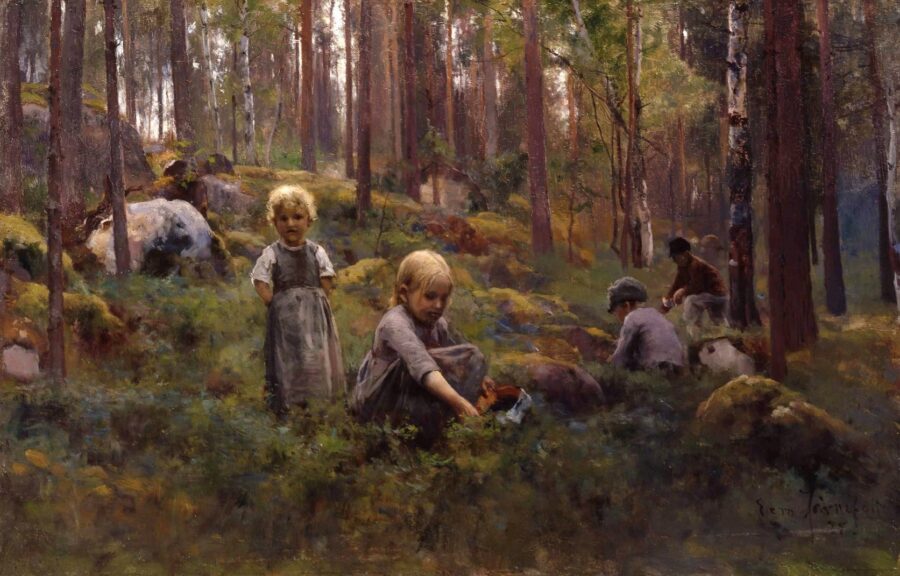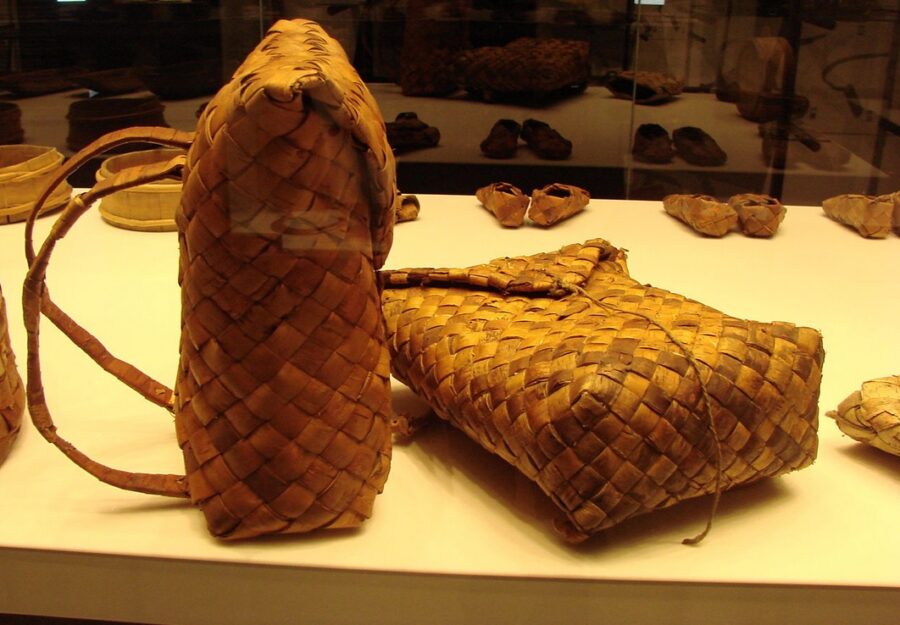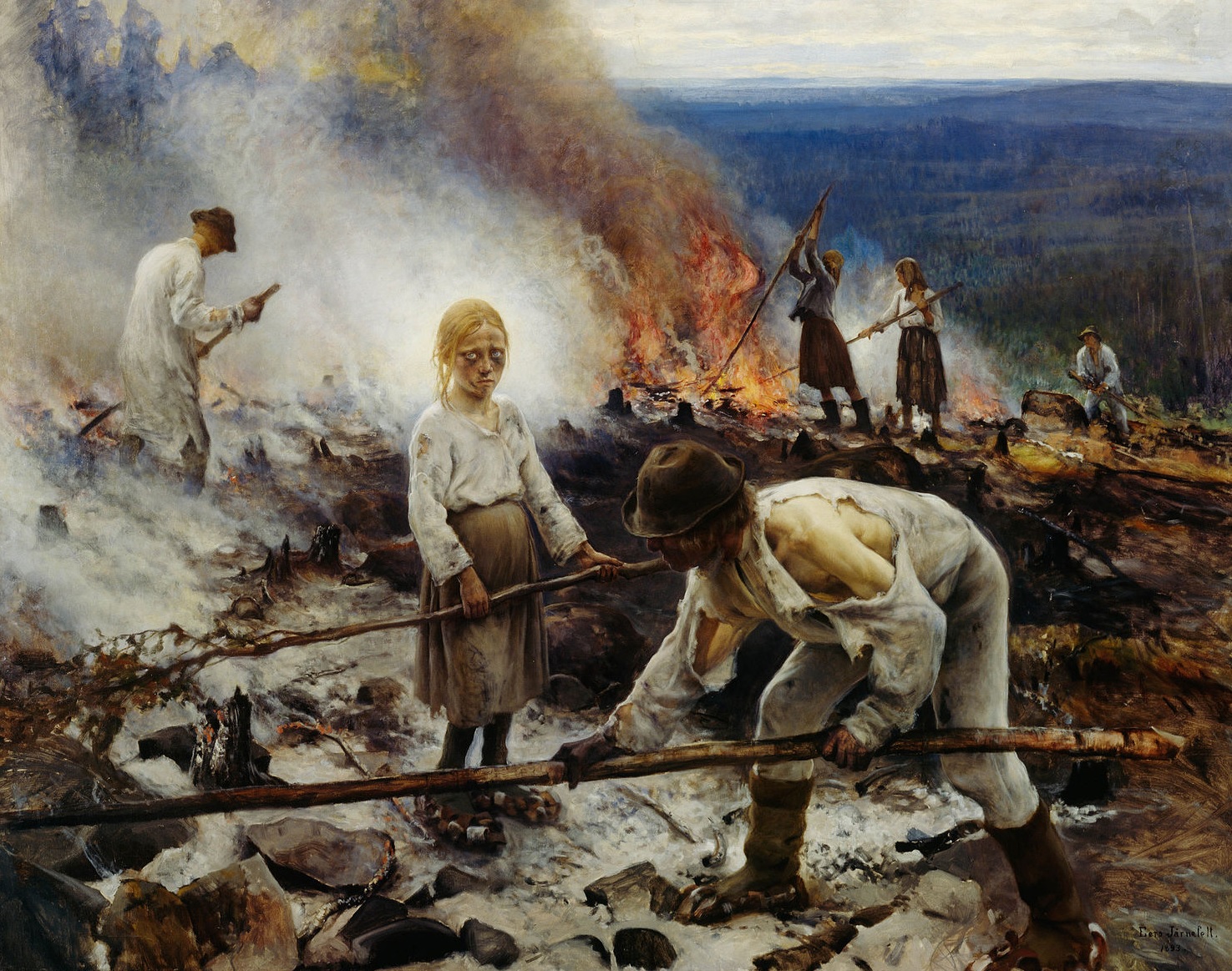NordenBladet – The Forest Finns were Finnish migrants who settled in forested areas of Sweden and Norway in the late 16th and early-to-mid-17th centuries. They were known for their use of slash-and-burn agriculture, a method of turning forests into farmlands, and their strong cultural connection to the forest environment. The Forest Finns also had a rich musical heritage, unique language, and close-knit communities. Over time, the term “Forest Finns” has also come to refer to a broader group of Finnish people with similar cultural heritage, including those who remained in Finland.
There is a growing appreciation for the close relationship between the Forest Finns and the forest environment, and this is inspiring people to explore the forest in new ways and to rediscover its importance for our well-being and spiritual connection.
While it is unlikely that the Forest Finns’ traditional lifestyle will be fully revived, their legacy and cultural heritage will continue to live on and influence future generations.
Forest Finns* (Finnish: Metsäsuomalaiset, Norwegian bokmål: Skogfinner, Norwegian nynorsk: Skogfinnar, Swedish: Skogsfinnar), also known as Finnish Tavastians (Finnish: Hämäläiset, Swedish: Tavaster), are a Finnish ethnic group with historical roots in the Häme region of Finland. Savonians (Finnish: Savolaiset, Savonian: Savolaaset, Savolaeset) are descendants of Tavastian and Karelian peasants who, during the Middle Ages, had settled in the areas that would later become known as Savonia in order to find new lands suitable for slash-and-burn agriculture. They have a distinct cultural identity that sets them apart from other Finnish groups, and their traditions and way of life have been influenced by the forested landscape in which they live.
The Forest Finns have a long history in Finland, with evidence of their presence in the Häme region (Swedish: Tavastland, Latin: Tavastia) dating back to the Middle Ages. They are thought to have originated from the Tavastian people, an ancient Finnish tribe that lived in the area. Over time, the Forest Finns developed a unique culture and traditions that were shaped by their close relationship with the forest environment.
One of the key features of Forest Finn culture is their traditional way of life, which revolves around the use of the forest for subsistence. Forest Finns have a long history of hunting, fishing, and gathering wild plants for food, as well as using the forest for building materials and fuel. This close relationship with the forest has also shaped their spiritual beliefs and practices, with many Forest Finns having a strong connection to nature and the environment.
Another important aspect of Forest Finn culture is their musical tradition. They have a rich heritage of traditional music and dance, which is an important part of their cultural identity. Many Forest Finns are accomplished musicians and play a variety of instruments, including the fiddle, accordion, and harmonica. Their music is often played at community gatherings and celebrations, and it is an important way for Forest Finns to preserve their cultural heritage.
Despite their distinct cultural identity, the Forest Finns have faced challenges in maintaining their traditions and way of life. The modernization of Finland in the 20th century brought new economic and social pressures, and many Forest Finns were forced to move to urban areas in search of work. This led to a decline in the number of Forest Finns living in the Häme region, and a loss of traditional skills and knowledge.

Flag of Forest Finns as adopted by several cultural associations
In recent years, however, there has been a resurgence of interest in Forest Finn culture, and efforts are being made to preserve and promote their traditions and way of life. Several organizations in Finland, Sweden, Denmark, and Norway have been established to support the Forest Finn community, and to raise awareness about their cultural heritage.
In conclusion, the Forest Finns are a unique and important part of Finnish cultural heritage. Their close relationship with the forest has shaped their way of life, and their traditional music and dance are an important part of their cultural identity. Despite the challenges they have faced, the Forest Finns are working to preserve their heritage and promote their cultural traditions.
What set Forest Finns apart from other Finnish groups?
There are several things that are characteristic of Forest Finns and set them apart from other Finnish groups. Some of the most notable include:
Slash-and-burn agriculture: The Forest Finns were known for their use of slash-and-burn agriculture, a method of turning forests into farmlands by cutting down trees and burning the brush. This was a key part of their way of life, and set them apart from other Finnish groups who practiced more traditional agricultural methods.
Close relationship with the forest: The Forest Finns have a strong cultural connection to the forest environment, which has shaped their way of life and beliefs. They have a long history of hunting, fishing, and gathering wild plants for food, and their spiritual beliefs are closely tied to the forest.
Traditional music and dance: The Forest Finns have a rich musical heritage, and their traditional music and dance are an important part of their cultural identity. Many Forest Finns were accomplished musicians, and their music was often played at community gatherings and celebrations.
Unique language: The Forest Finns spoke a unique dialect of Finnish, known as Värmland Savonian, which was distinct from the standard Finnish language. Although the language is now extinct, it was an important part of their cultural heritage.
Close-knit communities: The Forest Finns were known for their close-knit communities, and for their strong sense of community and family. This was an important part of their way of life, and helped to sustain them as they established themselves in their new homes in Sweden and Norway.
These are just a few of the things that are characteristic of Forest Finns and set them apart from other Finnish groups. Their unique cultural identity and traditions, as well as their close relationship with the forest environment, are what make the Forest Finns a distinct and important part of Finnish cultural heritage.
The Legacy of the Forest Finns: A Cultural Treasure
The Nordic forest has always been a magical and mythical place and the Forest Finns were believed to have magical powers. They believed in nature and with spells, sacrifices and rituals they kept friends with the forest gods.
There has been a recent resurgence of interest in the Forest Finns and their cultural heritage, and there are efforts underway to preserve and promote their traditions. It is unlikely, that the time of the Forest Finns will return and that their traditional lifestyle will be completely revived but some communities have started to practice traditional slash-and-burn agriculture once again, and there are initiatives to preserve the Forest Finns’ musical heritage and traditional dances.
It is difficult to determine a specific “golden age” for the Forest Finns, as their history is characterized by both challenges and triumphs. However, their migration to Sweden and Norway in the late 16th and early-to-mid-17th centuries was a significant period of growth and expansion for the group – a group of Finnish people with a shared cultural heritage and close connection to the forest environment. During this time, they established themselves in their new homes and made important contributions to the local communities and economies.

Painting Berry Pickers by Finnish painter Eero Järnefelt (Wikipedia / Public domain)

A Forest Finn handmade backpack, or kontti. (Wikipedia /CC BY-SA 4.0)
Forest Finns migration from Finland to Sweden and Norway
The migration of the Forest Finns from Finland to Sweden and Norway in the late 16th and early-to-mid-17th centuries was driven by a variety of factors. One of the main reasons was the pressure to find new land to support their growing population. In Finland, the slash-and-burn agriculture practiced by the Forest Finns was becoming increasingly difficult due to the limited available land and the increasing competition for resources.
Another factor that contributed to their migration was the political situation in Finland at the time. During the late 16th century, Finland was under Swedish control, and many Finns felt oppressed by the Swedish authorities. This, combined with the search for new land, led many Forest Finns to look beyond the borders of Finland for opportunities.
The Forest Finns were drawn to the forested areas of Sweden proper and Norway because they were familiar with the forest environment and knew how to make use of the resources it provided. They established themselves in these areas and continued their traditional slash-and-burn agriculture, which involved cutting down trees and burning the brush to clear the land for farming. Over time, the Forest Finns became well established in these areas and made significant contributions to the local communities and economies.
Despite their successful migration, the Forest Finns faced challenges in maintaining their cultural identity and traditions. The process of assimilating into the local cultures was gradual, but over time the Forest Finns became largely assimilated into the Swedish and Norwegian cultures. As a result, their language, a variety of Savonian Finnish, became extinct, although it survived among a tiny minority until the 20th century.
Today, the Forest Finns are remembered as a significant part of the history and cultural heritage of Sweden and Norway. Their legacy can be seen in the customs and traditions that they passed down, as well as the way they shaped the local landscapes through their slash-and-burn agriculture. Despite the challenges they faced, the Forest Finns are an important part of the Nordic cultural heritage, and their migration story is a testament to their resilience and determination in the face of adversity.
___________________________________
* The term “Forest Finns” originally referred to the Finnish migrants who settled in forested areas of Sweden and Norway, but over time, the term has also been used to refer to a broader group of Finnish people with a similar cultural heritage. This group includes not only those who migrated to Sweden and Norway, but also those who remained in Finland and continued to practice slash-and-burn agriculture and maintain the Forest Finn cultural traditions.
In Finland, the Forest Finns are often considered to be a subgroup of the larger Finnish population, and their cultural heritage is an important part of the country’s national identity. While the exact definition of the term “Forest Finns” can vary depending on the context, it is generally understood to refer to a group of Finnish people with a shared cultural heritage and close connection to the forest environment.
Featured image: Painting of forest-burning by Finnish painter Eero Järnefelt (1863-1937) (Wikipedia / Public Domain)
Read also:
Preserving Heritage and Identity: The Swedish-Speaking Minority in Finland
Preserving Heritage and Identity: Finnish-speaking minority in Sweden
Scandinavian history & Norse culture: Viking-era longhouses and burial mounds
EXHAUSTIVE OVERVIEW: who were the ancient Scandinavian origin Vikings and when was the time of the Vikings?
